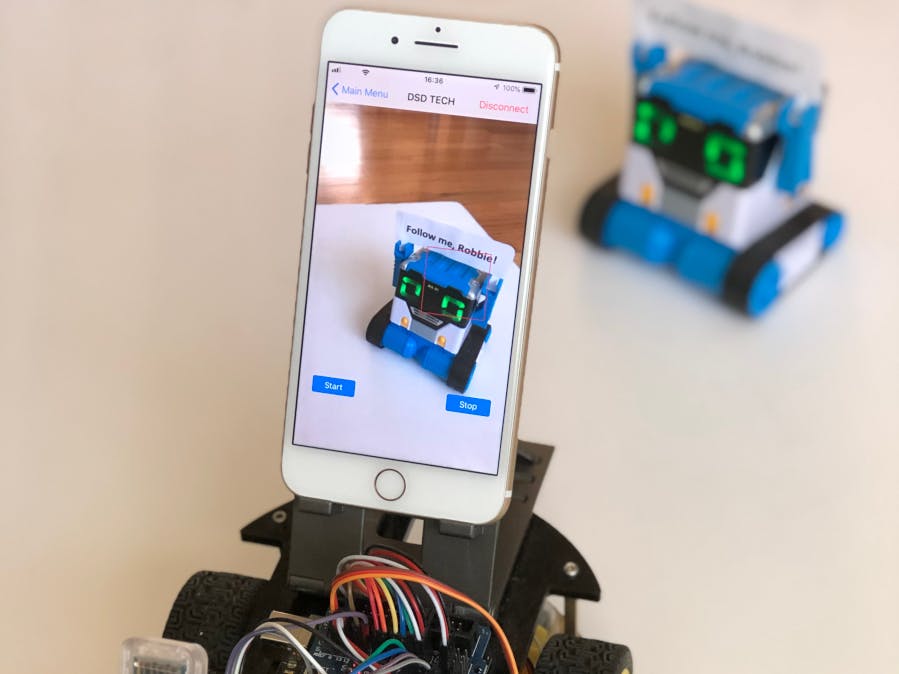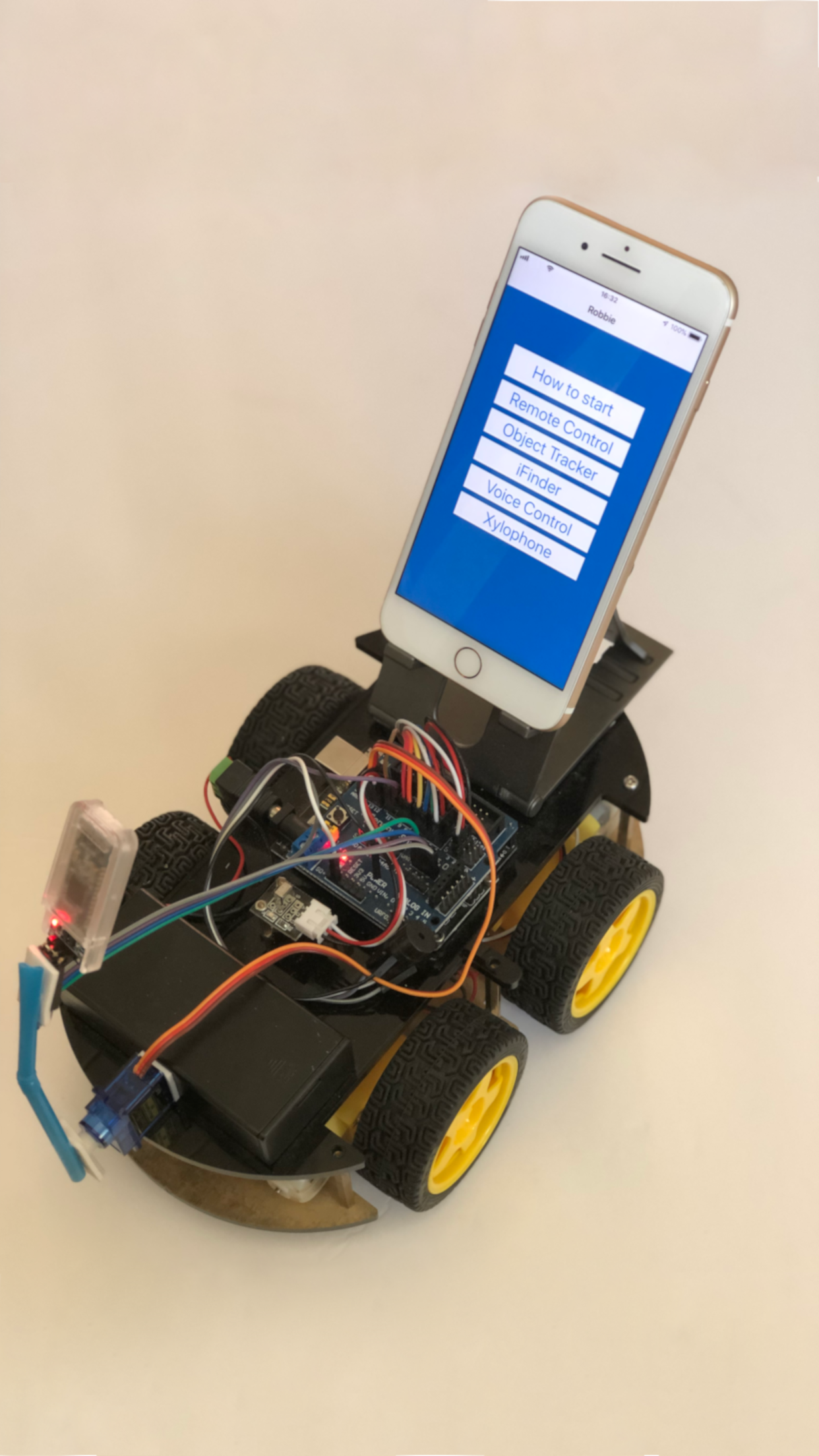#include <Servo.h>
Servo servo;
int angle = 0;
boolean forward1 = false ;
String bluetoothRead, Str_x, Str_y, Str_p, Str_s;
int x ;
int y ;
int points;
int length;
const int buzzer = 10;
int s;
unsigned long previousMillis = millis(); // will store last time LED was updated
const long interval = 1000; // interval at which to blink (milliseconds)
#define ENA 11
#define ENB 6
#define IN1 5
#define IN2 7
#define IN3 8
#define IN4 9
#define DELAY 20
int carSpeed = (y*3);
int speed_Coeff = (1 + (x/50));
void setup() {
Serial.begin(9600);
Serial.flush();
pinMode(IN1,OUTPUT);
pinMode(IN2,OUTPUT);
pinMode(IN3,OUTPUT);
pinMode(IN4,OUTPUT);
pinMode(ENA,OUTPUT);
pinMode(ENB,OUTPUT);
pinMode(buzzer, OUTPUT);
stop();
servo.attach(13);
servo.write(angle);
}
void loop() {
int i=0;
char commandbuffer[200];
unsigned long currentMillis = millis();
if(Serial.available()){
delay(10);
while( Serial.available() && i< 199) {
commandbuffer[i++] = Serial.read();
}
commandbuffer[i++]='\0';
bluetoothRead = (char*)commandbuffer;
length = bluetoothRead.length();
Serial.println(bluetoothRead);
if(bluetoothRead.substring(0, 1).equals("x")){
int i=1;
while(bluetoothRead.substring(i, i+1) != ("y")){
i++;
}
Str_x = bluetoothRead.substring(1, i);
x = Str_x.toInt();
Str_y = bluetoothRead.substring(i+1, length - 2);
y = Str_y.toInt();
Str_p = bluetoothRead.substring(length - 2, length - 1);
points = Str_p.toInt();
Str_s = bluetoothRead.substring(length - 1, length);
s = Str_s.toInt();
i = 1;
Serial.println(x);
Serial.println(y);
Serial.println(points);
Serial.println(s);
Serial.println(length );
stop();
carSpeed = (y*2.5);
speed_Coeff = (1 + (x/50));
if(points == 1){
forward();
}
if(points == 0){
stop();
}
if(points == 2){
back();
}
if(points == 3){
fleft();
}
if(points == 4){
fright();
}
if(points == 5){
left();
}
if(points == 6){
right();
}
if(points == 7){
bleft();
}
if(points == 8){
bright();
}
if(points == 9){
findo();
}
if (s == 7){
play_do();
}
if (s == 6){
play_re();
}
if (s == 5){
play_mi();
}
if (s == 4){
play_fa();
}
if (s == 3){
play_sol();
}
if (s == 2){
play_la();
}
if (s == 1){
play_ci();
}
//When an object is detected the iRobbie App will start sending s = 8 to the Arduino.
//You can use it in your own Arduino code. The commented lines is an example.
if (s == 8){
// if (millis() - previousMillis >= DELAY)
// {previousMillis += DELAY;
// if (forward1)
// {
// servo.write(-- angle);
// if(angle == 0)
// forward1 = false;
// }
// else
// {
// servo.write(++ angle);
// if (angle == 30)
// forward1 = true;
// }
// }
// scan from 0 to 180 degrees
// for(angle = 10; angle < 90; angle++)
// {
// servo.write(0);
// delay(15);
// }
// servo.write(90);
// }
// servo.write(-90);
// }
// now scan back from 180 to 0 degrees
// for(angle = 90; angle > 10; angle--)
// {
// servo.write(angle);
// delay(15);
// }
// servomove();
}
}
}
}
void servomove(){
unsigned long currentMillis = millis();
if (currentMillis - previousMillis >= interval) {
previousMillis = currentMillis;
for(angle = 0; angle < 60; angle++)
{
servo.write(angle);
previousMillis = currentMillis;
delay(10);
}
// now scan back from 180 to 0 degrees
for(angle = 60; angle > 0; angle--)
{
servo.write(angle);
}
previousMillis = currentMillis;
delay(10);
}
}
void forward(){
analogWrite(ENA,carSpeed);
analogWrite(ENB,carSpeed);
digitalWrite(IN1,LOW);
digitalWrite(IN2,HIGH);
digitalWrite(IN3,LOW);
digitalWrite(IN4,HIGH);
delay(25);
// Serial.println("Forward");
}
void forwards(){
analogWrite(ENA,carSpeed);
analogWrite(ENB,carSpeed);
digitalWrite(IN1,LOW);
digitalWrite(IN2,HIGH);
digitalWrite(IN3,LOW);
digitalWrite(IN4,HIGH);
delay(25);
// Serial.println("Forward_slow");
}
void back(){
analogWrite(ENA,(carSpeed - 20));
analogWrite(ENB,(carSpeed - 20));
digitalWrite(IN1,HIGH);
digitalWrite(IN2,LOW);
digitalWrite(IN3,HIGH);
digitalWrite(IN4,LOW);
delay(25);
// Serial.println("Back");
}
void backs(){
analogWrite(ENA,(carSpeed - 20));
analogWrite(ENB,(carSpeed - 20));
digitalWrite(IN1,HIGH);
digitalWrite(IN2,LOW);
digitalWrite(IN3,HIGH);
digitalWrite(IN4,LOW);
delay(25);
// Serial.println("Back_slow");
}
void left(){
analogWrite(ENA,x);
analogWrite(ENB,x);
digitalWrite(IN1,LOW);
digitalWrite(IN2,HIGH);
digitalWrite(IN3,HIGH);
digitalWrite(IN4,LOW);
delay(25);
// Serial.println("Left");
}
void right(){
analogWrite(ENA,x);
analogWrite(ENB,x);
digitalWrite(IN1,HIGH);
digitalWrite(IN2,LOW);
digitalWrite(IN3,LOW);
digitalWrite(IN4,HIGH);
delay(25);
// Serial.println("Right");
}
void fright(){
analogWrite(ENA,carSpeed);
analogWrite(ENB,carSpeed/speed_Coeff);
digitalWrite(IN1,LOW);
digitalWrite(IN2,HIGH);
digitalWrite(IN3,LOW);
digitalWrite(IN4,HIGH);
delay(25);
// Serial.println("Forward_right");
}
void fleft(){
analogWrite(ENA,carSpeed/speed_Coeff);
analogWrite(ENB,carSpeed);
digitalWrite(IN1,LOW);
digitalWrite(IN2,HIGH);
digitalWrite(IN3,LOW);
digitalWrite(IN4,HIGH);
delay(25);
// Serial.println("Forward_left");
}
void bright(){
analogWrite(ENB,carSpeed);
analogWrite(ENA,carSpeed/speed_Coeff);
digitalWrite(IN1,HIGH);
digitalWrite(IN2,LOW);
digitalWrite(IN3,HIGH);
digitalWrite(IN4,LOW);
delay(25);
// Serial.println("Back_right");
}
void bleft(){
analogWrite(ENB,carSpeed/speed_Coeff);
analogWrite(ENA,carSpeed);
digitalWrite(IN1,HIGH);
digitalWrite(IN2,LOW);
digitalWrite(IN3,HIGH);
digitalWrite(IN4,LOW);
delay(25);
// Serial.println("Back_left");
}
void findo(){
analogWrite(ENA,90);
analogWrite(ENB,90);
digitalWrite(IN1,HIGH);
digitalWrite(IN2,LOW);
digitalWrite(IN3,LOW);
digitalWrite(IN4,HIGH);
delay(25) ;
}
void stop(){
digitalWrite(ENA,LOW);
digitalWrite(ENB,LOW);
// Serial.println("Stop!");
}
void play_do(){
tone(buzzer, 533);
delay(500);
noTone(buzzer);
}
void play_re(){
tone(buzzer, 587);
delay(500);
noTone(buzzer);
}
void play_mi(){
tone(buzzer, 659);
delay(500);
noTone(buzzer);
}
void play_fa(){
tone(buzzer, 698);
delay(500);
noTone(buzzer);
}
void play_sol(){
tone(buzzer, 784);
delay(500);
noTone(buzzer);
}
void play_la(){
tone(buzzer, 880);
delay(500);
noTone(buzzer);
}
void play_ci(){
tone(buzzer, 987);
delay(500);
noTone(buzzer);
}




_ztBMuBhMHo.jpg?auto=compress%2Cformat&w=48&h=48&fit=fill&bg=ffffff)






Comments